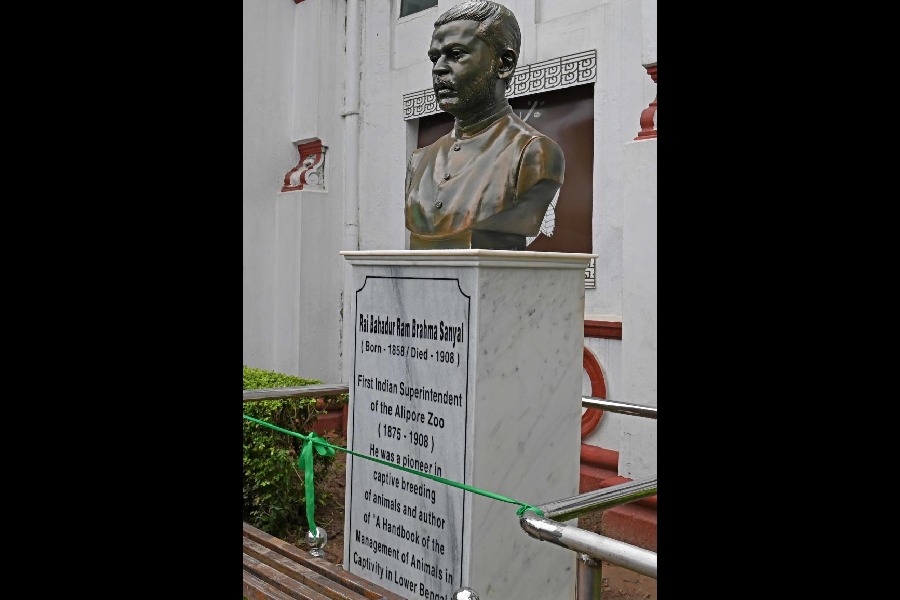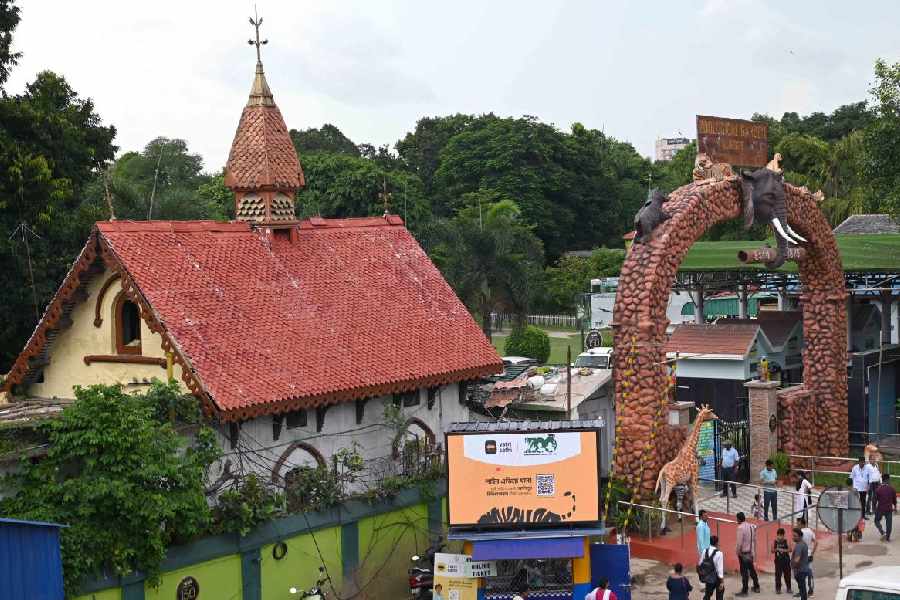The first lions came from Mesopotamia. Native babus were bewildered by giraffes.
A memorabilia book to mark 150 years of the Alipore soo offers a peek into several such delectable nuggets from the past of the country’s first zoological park.
The book was launched during the sesquicentenary celebrations that sawministers and forest officials share their experiences of and anecdotes about the park.
A passage from the book reads: “Our two best lions came from Mesopotamia... These lions came separately; the first one, named Haroon-al-Rasheed, was... so tamed that Sir Buckland kept him in his garden for some time and treated him like any pet dog. Rasheed was tied with a chain and collar and spent his days in a dog kennel. He was transferred to the Garden only when it had outgrown the kennel. A few months later, Zobeide, a gentle female lion of Mesopotamia, arrived in Calcutta to accompany Rasheed. Soon, Rasheedand Zobeide madea happy pair to attract visitors.”

A bust of the first Indian superintendent of the Alipore zoo, Ram Brahma Sanyal, was unveiled on Tuesday.
C. T. Buckland was the second president of thezoo.
Multiple passages, including the previous one have been borrowed from the writings of Ram Brahma Sanyal, who joined the park as an ordinary worker and went on to become the first Indian superintendent of the zoo.
Another passage talks about the bewilderment that giraffes caused in late nineteenth-century Calcutta.
“Indians experienced these mysterious creatures no later than 1877, soon after the establishment of Calcutta Zoo. Buckland said” ‘It used to be an amusement, and also a duty, to me to try and show the animals to native gentlemen when they came from their country seats to visit Calcutta; and I invariably invited them to come with me to see the zoo. I think the giraffes puzzled them most. One fine Hindoo nobleman with whom I have many a time been out tiger-shooting on his property, suggested that the giraffe was a new sort of tiger, but he was comforted and convinced when he saw them eat the branch of a tree from my hands’.”
A bust of Sanyal was unveiled at the zoo on Tuesday as part of the celebrations. The zoo was established on September 24, 1875. The Prince of Wales Zoological Garden, as it was called, was thrown open to the public next year.
The new sesquicentenary gates, on Alipore Road and National Library Avenue, were also inaugurated on Tuesday. “I live nearby. I used to be a student of St Thomas’ (Boys’ School). For me, Alipore Zoo means happiness. I would be happy coming here when I was a boy. I still feel happy when I am here,” said Firhad Hakim, Calcutta’s mayor and the chief guest on Tuesday.
“People are interested in wildlife because humans have animal traits. We live in families, like elephants. At times, we are ferocious like tigers, especially politicians. Mischievous children are likened to monkeys.”
State forest minister Birbaha Hansda sought “everybody’s cooperation in taking the legacy of the zoo forward”.
New enclosures for mouse deer, four-horned antelope, hog deer, Bengal fox and leopard cat were also inaugurated on Tuesday.
A Malayan tapir at Alipore is the only one of its kind in any zoo in India now, Subhankar Sengupta, director of the Alipore zoo, said.
The tapir, a herbivore native to Thailand, Myanmar and Indonesia, was found by foresters in a car in Jalpaiguri on February 15.
Two men, who police said were smuggling the animal from Manipur to Calcutta, were arrested.
The court of the chief judicial magistrate in Jalpaiguri ordered that the tapir be shifted to the Alipore zoo for better management and care.
“There are plans to bring African lions to the zoo in the near future,” Sengupta told Metro on the sidelines.
Students of schools and colleges who won painting and poster contests were awarded at the zoo on Tuesday.
Past directors and their family members were also felicitated.










